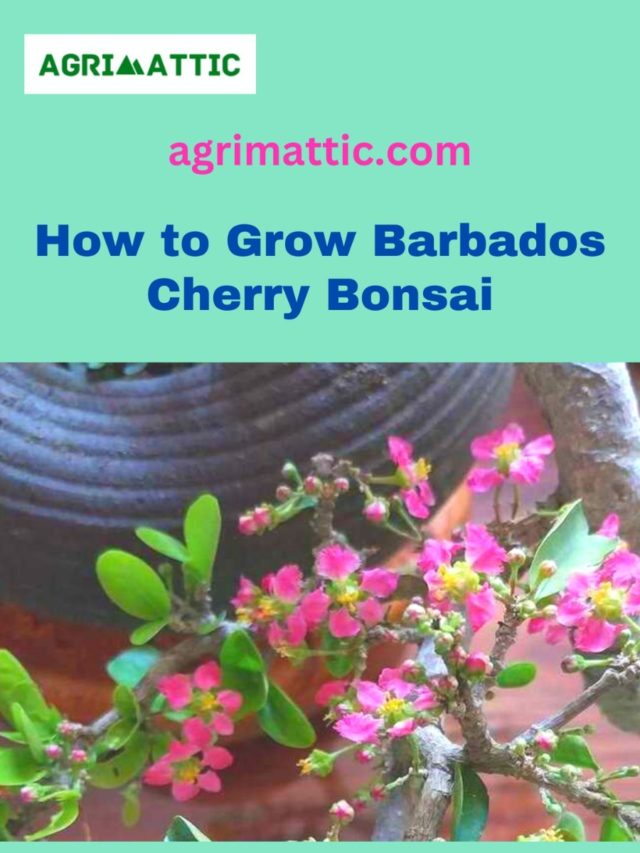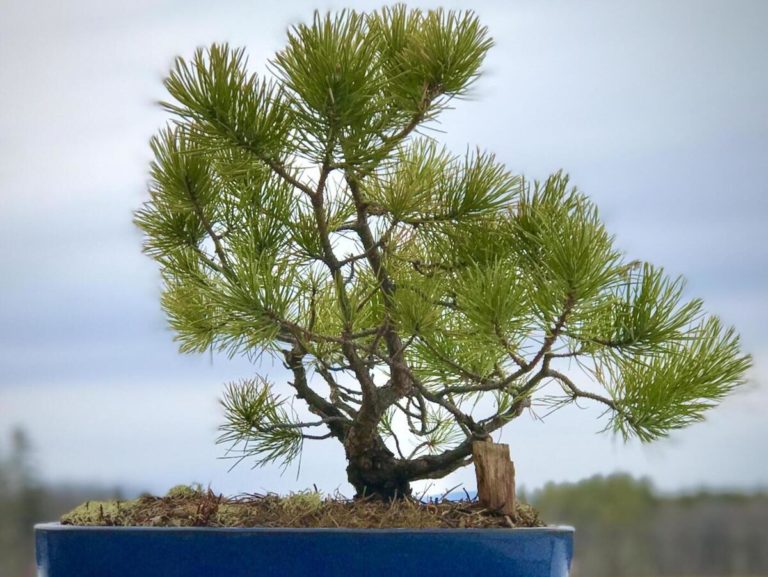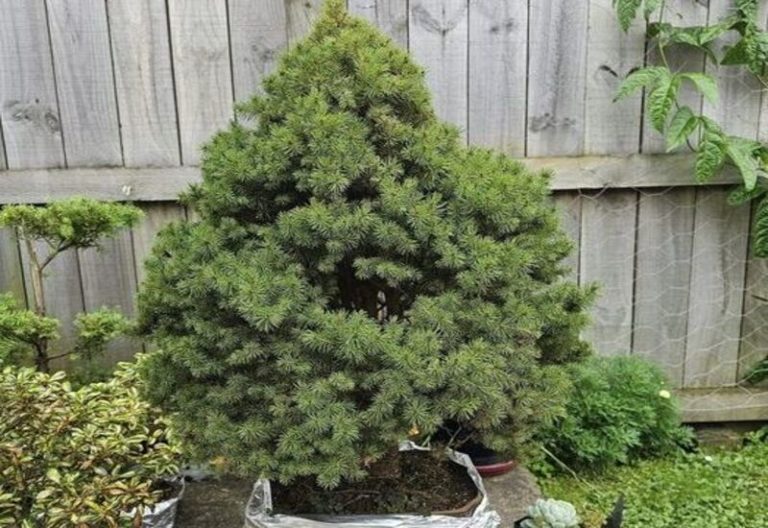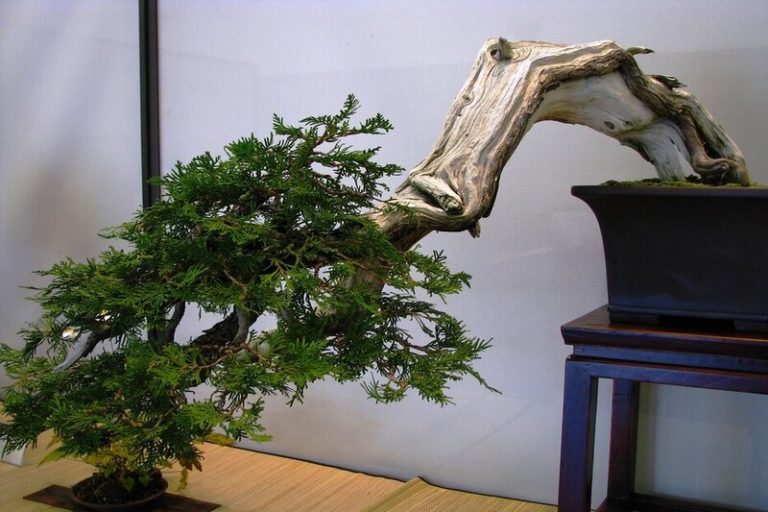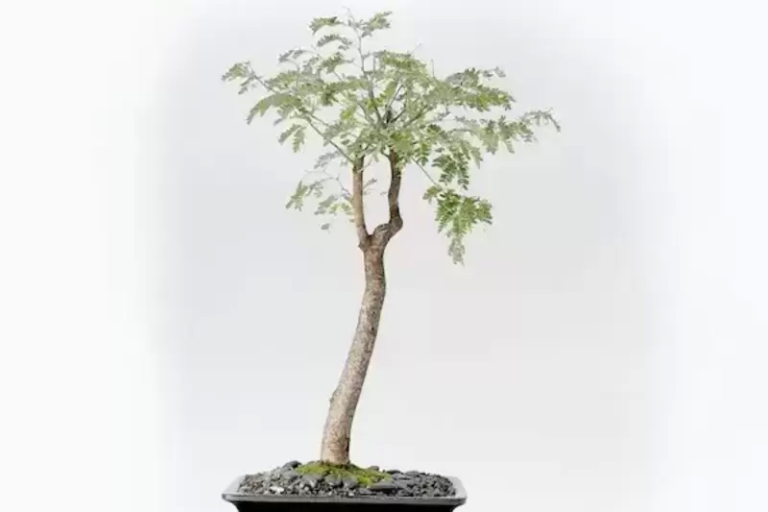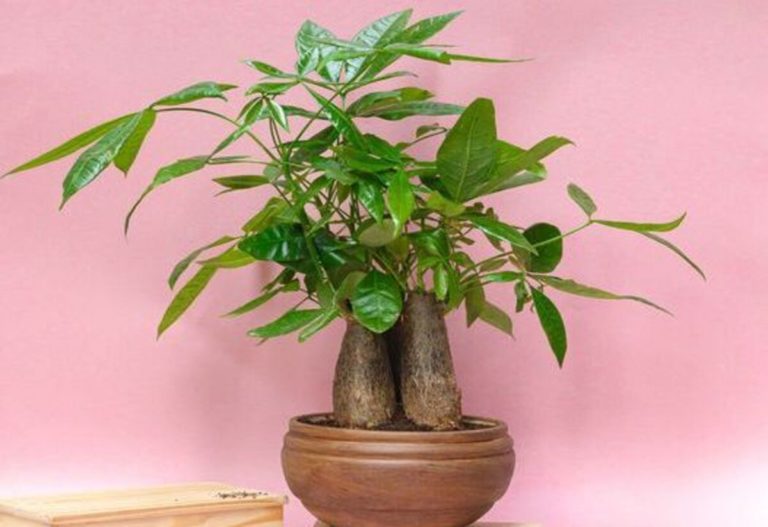Barbados Cherry Bonsai: A Gift That Keeps on Giving
Barbados Cherry Bonsai is a beautiful and famous tree species that many bonsai lovers love. It is famous for bonsai because it is small, has beautiful flowers, and fruit that you can eat. Here is a detailed piece about Barbados Cherry Bonsai that tells you what it is, how to care for it, how to design it, and what usual problems to watch out for.
What is Barbados Cherry Bonsai?
Barbados Cherry Bonsai is a tree species that has small, shiny leaves and beautiful flowers that come in shades of pink, red, or white. It also produces small, edible fruit that tastes like cherries. Barbados Cherry Bonsai is a popular choice for bonsai because it is easy to grow and can thrive indoors or outdoors. It is native to the Caribbean and Central and South America.
History and Origins of the Barbados Cherry Bonsai
The Barbados Cherry Bonsai has a long and interesting past that crosses many different cultures and countries. Since ancient times, the Arawak people of the Caribbean have valued the tree for its medical and food uses. Later, the tree was brought to Asia, where its beautiful flowers and ease of care made it a popular choice for bonsai.
The Barbados Cherry Bonsai is still highly valued by bonsai fans and owners around the world. Its unique features, like its small size, pretty flowers, and edible fruit, make it a wanted addition to any bonsai collection. The Barbados Cherry Bonsai has been used as a decoration and as a useful plant for a long time, and its beauty and flexibility continue to be valued.
Types of Barbados Cherry Bonsai
There are numerous varieties of Barbados Cherry Bonsai, each with its own distinct characteristics. Here are several of the most common:
Acerola: This is the most commonly grown type of Barbados Cherry Bonsai. It has small leaves and produces an abundance of bright red fruit that is sweet and tangy.
Malpighia glabra: This type of Barbados Cherry Bonsai has a more upright growth habit than other varieties. It produces pink or white flowers, followed by small red fruit that is high in vitamin C.
Malpighia emarginata: This type of Barbados Cherry Bonsai has a bushy growth habit and produces bright red fruit that is slightly tart. It is often used for its ornamental value due to its attractive flowers and foliage.
Malpighia punicifolia: This type of Barbados Cherry Bonsai has a weeping growth habit and produces small, red fruit that is sweet and juicy. It is often used for cascading bonsai styles.
Malpighia coccigera: This type of Barbados Cherry Bonsai is a dwarf variety that has small leaves and produces small, red fruit. It is often used for shohin bonsai, which are bonsai trees that are less than 8 inches in height.
No matter which type of Barbados Cherry Bonsai you choose, they are all beautiful and easy to care for. With proper care and attention, they can thrive and bring beauty to any bonsai collection.
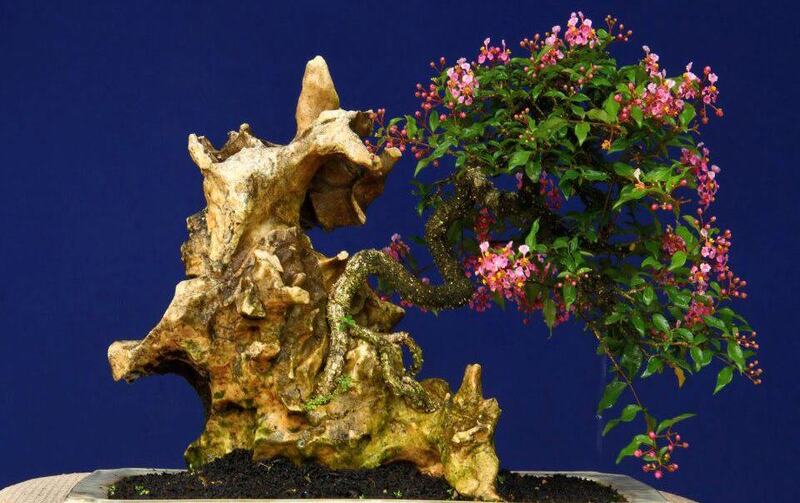
Barbados Cherry Bonsai and Its Symbolism
In addition to its aesthetic appeal and practical applications, the Barbados Cherry Bonsai carries cultural significance. Here are some of the symbolic meanings and associations with this bonsai tree:
- Good Luck: In many cultures, the Barbados Cherry Bonsai is believed to bring good luck and prosperity to its owner. It is often given as a gift to wish someone success and happiness.
- Love and Romance: In some cultures, the Barbados Cherry Bonsai is associated with love and romance. It is often given as a gift to express love or as a symbol of a growing relationship.
- Endurance: The Barbados Cherry Bonsai is viewed as a symbol of endurance and resiliency due to its ability to endure and flourish in a variety of environments.
- Appreciation for Nature: Bonsai cultivation in general is often seen as a way to connect with and appreciate nature. The Barbados Cherry Bonsai, with its vibrant flowers and edible fruit, serves as a reminder of the beauty and abundance that nature provides.
- Creativity and Artistry: Bonsai cultivation is also seen as a form of art that requires creativity and skill. The Barbados Cherry Bonsai, with its unique and beautiful features, is a popular choice for bonsai enthusiasts who want to express their creativity through their trees.
Overall, the Barbados Cherry Bonsai holds significant symbolism in various cultures and serves as a reminder of the beauty, resilience, and creativity of nature.
Characteristics of the Barbados Cherry Bonsai
The Barbados Cherry Bonsai is a compact tree with a variety of distinctive and appealing qualities that make it a popular option among bonsai enthusiasts. Here are some of this tree’s most prominent characteristics:
Small size: The Barbados Cherry Bonsai typically grows to a height of 2-3 feet, making it a perfect choice for small spaces.
Attractive flowers: The tree produces vibrant pink or white flowers that blossom continuously throughout the year, adding color to any bonsai collection.
Edible fruit: The tree produces petite, brilliant red, sweet and tart fruit. The vitamin C-rich fruit can be consumed fresh or used in preserves, relishes, and other culinary applications.
Easy to care for: The Barbados Cherry Bonsai is relatively simple to maintain and tolerant of a wide variety of growing conditions, making it an excellent option for beginners.
Beautiful foliage: The tree’s small, glossy, green foliage provide a striking contrast to the tree’s vibrant blossoms and fruit.
Symbolic significance: The Barbados Cherry Bonsai is also highly valued for its symbolic significance in various cultures, representing good luck, love, endurance, and appreciation for nature.
Overall, the Barbados Cherry Bonsai is a highly esteemed tree that possesses a variety of distinctive and appealing qualities, making it an excellent addition to any bonsai collection. With appropriate care and maintenance, it can flourish and continue to provide beauty and symbolism for many years.
How to Grow Barbados Cherry Bonsai
It can be rewarding and delightful to cultivate a Barbados Cherry Bonsai. Here are some suggestions for growing and maintaining your Barbados Cherry Bonsai:
Choosing the right container: Select a container that is slightly larger than the root system of your Barbados Cherry Bonsai. It should have good drainage holes to prevent water from accumulating in the soil.
Soil mix: Utilize an organic matter-rich, well-draining soil mixture. It is effective to combine peat moss, perlite, and vermiculite.
Watering: Water your Barbados Cherry Bonsai regularly, but be sure not to overwater it. The soil should be moist, but not waterlogged. Allow the soil to dry out slightly before watering again.
Fertilizing: Fertilize your Barbados Cherry Bonsai every two weeks during the growing season with a balanced, water-soluble fertilizer.
Pruning: Prune your Barbados Cherry Bonsai regularly to maintain its shape and size. Remove any dead or diseased branches and pinch back new growth to encourage branching.
Light: The Barbados Cherry Bonsai prefers bright, indirect light. Place it in a sunny window or under a grow light.
Temperature: The Barbados Cherry Bonsai prefers warm temperatures between 60-85°F (15-29°C). Avoid placing it near cold drafts or air conditioning units.
Repotting: Repot your Barbados Cherry Bonsai every two to three years, or when the roots have outgrown the container. This should be done during the spring or summer months.
With proper care and attention, your Barbados Cherry Bonsai can thrive and continue to provide beauty and symbolism for many years to come.
Benefits of the Barbados Cherry Bonsai
The Barbados Cherry Bonsai is not only a beautiful and symbolic tree, but it also offers a range of benefits. Here are some of the benefits of the Barbados Cherry Bonsai:
- Ornamental value: The bright pink or white flowers and small, glossy leaves of the Barbados Cherry Bonsai make it an attractive addition to any indoor or outdoor space.
- Culinary use: The fruit of the Barbados Cherry Bonsai is edible and high in vitamin C, making it a healthy and tasty addition to jams, jellies, and other culinary creations.
- Medicinal properties: Traditional medicine has used the Barbados Cherry Bonsai’s fruit to treat colds, coughs, and fevers, among other things.
- Air purification: Like other plants, the Barbados Cherry Bonsai helps to purify the air by absorbing harmful pollutants and releasing oxygen.
- Stress relief: Caring for a bonsai tree may be a calming and contemplative hobby that can aid in stress reduction and mental health improvement.
- Symbolic significance: The Barbados Cherry Bonsai is highly valued for its symbolic significance in various cultures, representing good luck, love, endurance, and appreciation for nature.
Overall, the Barbados Cherry Bonsai is a valuable and beneficial tree that offers a range of practical and symbolic benefits. Whether you are a bonsai enthusiast, a culinary enthusiast, or someone who simply enjoys the beauty and symbolism of this tree, the Barbados Cherry Bonsai is a great choice.
Styling and Design of the Barbados Cherry Bonsai
Styling and designing the Barbados Cherry Bonsai can be a fun and creative process. Here are some tips to help you create a beautiful and unique Barbados Cherry Bonsai:
Choose a style: There are several styles to choose from when styling your Barbados Cherry Bonsai, including formal upright, informal upright, slanting, cascade, and semi-cascade.
Create a basic structure: Once you have chosen a style, create a basic structure by wiring the trunk and branches into the desired shape. Be sure to use bonsai wire that is appropriate for the size and thickness of your tree.
Prune and shape: Use sharp bonsai shears to prune and shape your Barbados Cherry Bonsai. Remove any unwanted branches and shape the remaining branches to create a balanced and aesthetically pleasing design.
Create a focal point: To create visual interest and balance in your design, create a focal point by placing a larger or more prominent branch in a strategic location.
Consider the pot and accessories: Choose a pot that complements the style and design of your Barbados Cherry Bonsai. You can also add accessories such as rocks, moss, or figurines to enhance the overall design.
Maintenance: Regular maintenance is important to maintain the health and beauty of your Barbados Cherry Bonsai. Be sure to prune and wire as needed, and fertilize and water according to the tree’s needs.
You may develop a beautiful and unique Barbados Cherry Bonsai by following these suggestions and utilizing your creativity and imagination for years to come.
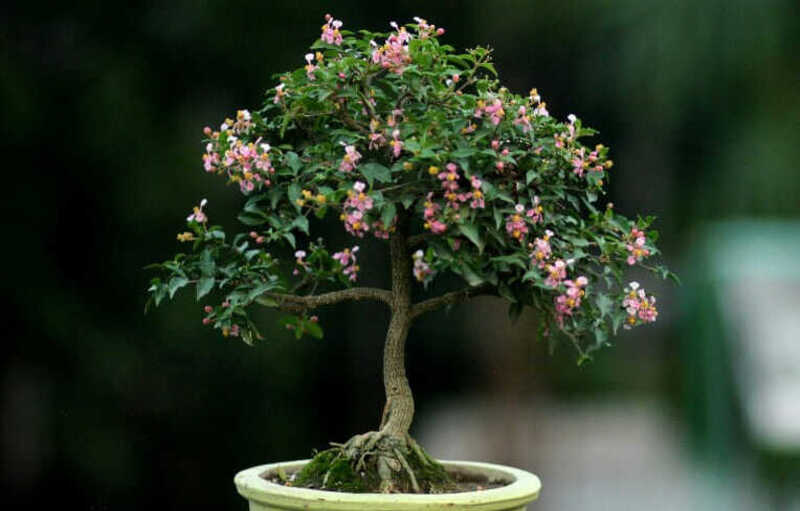
How to Care for and Maintain a Barbados Cherry Bonsai
Proper care and maintenance are essential for your Barbados Cherry Bonsai’s health and lifespan. Here are some pointers to assist you in caring for and maintaining your tree:
- Watering: The Barbados Cherry Bonsai should be watered thoroughly when the soil is slightly dry to the touch. Be sure to avoid overwatering, as this can lead to root rot.
- Soil: Use a well-draining soil mixture that is appropriate for bonsai trees. The soil should be porous and allow for good airflow.
- Fertilization: Fertilize your Barbados Cherry Bonsai every 2-4 weeks during the growing season with a balanced liquid fertilizer. Be sure to follow the manufacturer’s instructions for dosage and application.
- Pruning: Regular trimming is required to keep your tree’s form and size. Pruning should be done in the early spring or late fall, and any dead or diseased branches should be removed as soon as feasible.
- Wiring: Wiring is often necessary to shape and style your Barbados Cherry Bonsai. Be sure to use appropriate bonsai wire and remove it promptly once the branches have set into their desired shape.
- Lighting: The Barbados Cherry Bonsai prefers bright, indirect light. Be sure to avoid placing it in direct sunlight, as this can cause leaf burn.
- Temperature and humidity: The best temperature range for the Barbados Cherry Bonsai is between 60 and 80 degrees Fahrenheit (16 and 27 degrees Celsius), and it likes mild to high humidity.
By following these tips and giving your Barbados Cherry Bonsai the right care and maintenance, you can make sure it stays healthy and beautiful for years to come.
Barbados Cherry Bonsai care sheet
| Aspect | Care Tips |
| Watering | Water when the soil is slightly dry to the touch. Avoid overwatering. |
| Soil | Use well-draining soil mixture that is appropriate for bonsai trees. The soil should be porous and allow for good airflow. |
| Fertilization | Fertilize every 2-4 weeks during the growing season with a balanced liquid fertilizer. Follow the manufacturer’s instructions for dosage and application. |
| Pruning | Prune in the early spring or fall. Remove any dead or diseased branches promptly. |
| Wiring | Use appropriate bonsai wire and remove it promptly once the branches have set into their desired shape. |
| Lighting | Prefers bright, indirect light. Avoid direct sunlight to prevent leaf burn. |
| Temperature/Humidity | Ideal temperature range is 60-80°F (16-27°C), and it prefers moderate to high humidity levels. |
By following these care tips, you can help ensure that your Barbados Cherry Bonsai stays healthy and thrives as a beautiful bonsai tree.
FAQ:
Q: What is a Barbados Cherry Bonsai?
A: It is a small bonsai tree that grows in the Caribbean, South America, and Central America. It has fruit that looks like cherries and leaves that are very thin.
Q: How often should I water my Barbados Cherry Bonsai?
A: Water your tree when the soil is slightly dry to the touch, but avoid overwatering.
Q: What type of soil should I use for my Barbados Cherry Bonsai?
A: Use well-draining soil that is appropriate for bonsai trees, and allows for good airflow.
Q: How often should I fertilize my Barbados Cherry Bonsai?
A: Fertilize every 2-4 weeks during the growing season with a balanced liquid fertilizer, following the manufacturer’s instructions.
Q: How do I prune my Barbados Cherry Bonsai?
A: Prune in early spring or fall, removing any dead or diseased branches promptly.
Q: Can I wire my Barbados Cherry Bonsai?
A: Yes, wiring is often necessary to shape and style the tree, but be sure to remove the wire promptly once the desired shape is achieved.
Q: What lighting and temperature do Barbados Cherry Bonsai prefer?
A; They prefer bright, indirect light, and temperatures between 60-80°F (16-27°C), with moderate to high humidity levels.
Also Read:


